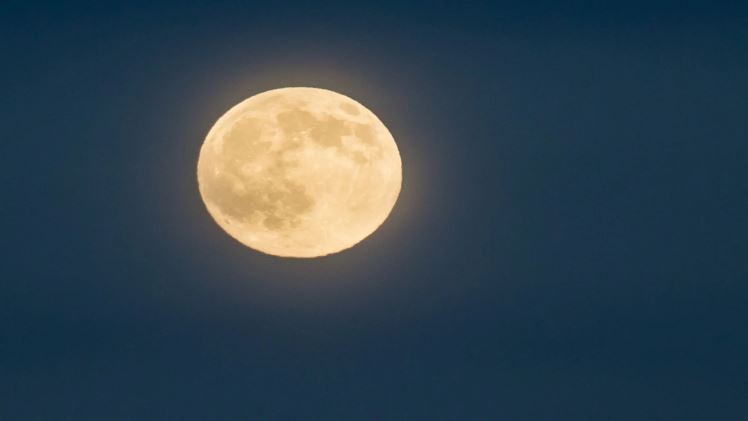
Exploring the Cultural Significance of the Lovely Phrase in Japanese Culture
Have you ever gazed at the night sky and marveled at the sheer beauty of the moon? In Japan, there exists an enchanting phrase that encapsulates this sentiment: “The Moon Is Beautiful Isn’t It” (美しいですね月, Utsukushii desu ne tsuki). This poetic expression magnifies our appreciation for the moon and its captivating allure.
In this comprehensive article, we will delve into the meaning behind this lovely phrase in Japanese culture. We will uncover the moon’s profound impact on art, storytelling, and the collective consciousness of the people in Japan. Whether you are a language enthusiast, an admirer of tales, or simply captivated by the moon, prepare to discover the mesmerizing world of “The Moon Is Beautiful Isn’t It” in Japan.
Unveiling the Meaning of “The Moon Is Beautiful Isn’t It?”
Beyond its surface observation of the moon’s visual charm, “The Moon Is Beautiful Isn’t It?” conveys a profound emotional connection between humanity and the moon. This phrase alludes to the awe, wonder, and romance sparked by our relationship with this celestial body.
When we utter these words, we are not solely appreciating the moon; we are also forging a connection with those around us who share the same view. It serves as a friendly acknowledgment of the collective beauty we witness in the night sky.
Think of it as a blissful pause amidst the chaos of life, allowing us to relish in nature’s masterpiece. It’s a way of saying “Let’s all enjoy the beauty of the moon together!” Therefore, the next time you see the bright moon overhead, keep in mind that saying, “The Moon Is Beautiful Isn’t It?” is akin to signaling approval for the nocturnal splendor we all cherish.
The Origins of “The Moon Is Beautiful Isn’t It?”

If you have a penchant for manga or anime, you may be familiar with the delightful Japanese phrase, “tsuki ga kirei desu ne,” which translates to “The moon is beautiful, isn’t it?” However, what is hidden behind this endearing expression?
The roots of “The Moon Is Beautiful Isn’t It?” can be traced back to the multifaceted tapestry of Japanese culture. In its original form, “美しいですね月” (Utsukushii desu ne tsuki), this phrase encapsulates a deep sense of admiration for the moon’s mesmerizing radiance.
Legend has it that during the educational years of the esteemed Japanese writer, Natsume Sōseki (1867-1916), a touching anecdote took place. In the hallowed halls of knowledge, a student grappled with conveying the essence of “I love you” in a foreign language. The translation proved to be an arduous task, as how can one encapsulate boundless love in mere words?
Japanese culture reveres nature and its inherent beauty, and this phrase reflects that profound connection. It finds its place in poetry, literature, and everyday conversations, conveying a shared sentiment of marveling at the moon’s splendor.
Throughout history, Japan has celebrated the moon through various festivals and traditions, such as the Mid-Autumn Festival, where families gather to witness its radiance and share stories. This phrase likely emerged from such cultural gatherings, where individuals expressed their awe at the moon’s beauty, fostering a sense of unity and connection.
As time passed, this phrase transcended mere words and became a reflection of the profound bond between the Japanese people and the natural world. Even today, it continues to evoke wonder and unity, reminding us of the timeless allure the moon holds in Japanese culture.
Responding to “The Moon Is Beautiful Isn’t It?”
Crafting a response to this heartfelt invitation demands a delicate touch. When you are met with those captivating words, “The Moon Is Beautiful Isn’t It?” pause to savor the wonders of the present.
Let your smile convey your appreciation and your eyes reflect the starlit skies within your heart. This gentle exchange of glances unites your souls as if engaged in a dance beneath the moon’s ethereal light.
With soft words, you may affirm, “Yes, it is undeniably captivating,” allowing your voice to convey your affection. Alternatively, you may playfully whisper, “The moon pales in comparison to your radiance.”
As the night envelops both of you, let your heart speak the language of romance. Share your admiration for the moon or reminisce about a memory evoked by its silver glow. Let your words twinkle like stars, sprinkling brilliance upon the nighttime canvas.
Responding to “The Moon Is Beautiful Isn’t It?” presents various possibilities, contingent upon the context and your personal sentiments. Here are a few potential responses:
-
Agreeing with Enthusiasm:
- “Absolutely! Its enchantment knows no bounds.”
- “I couldn’t agree more. It is mesmerizing tonight.”
-
Sharing Your Perspective:
- “Definitely. I am captivated by how it illuminates the entire sky.”
- “Yes, and its allure is further enhanced by the presence of twinkling stars.”
-
Adding a Touch of Poetry:
- “Indeed, the moon’s beauty remains a timeless delight.”
- “Oh, the moon’s radiance never fails to leave me in awe.”
-
Expressing Emotion:
- “Oh, it takes my breath away. It allows me to truly appreciate the world.”
- “Truly beautiful. It soothes the depths of one’s soul, doesn’t it?”
-
Initiating Conversation:
- “You’re absolutely right. Have you ever delved into moon legends from different cultures?”
- “Without a doubt. Have you ever experienced the serenity of moon-gazing on a tranquil night?”
-
Humorous Approach:
- “No doubt! The moon certainly deserves recognition – perhaps an award?”
- “Most certainly. I think the moon has been practicing its ‘glow-up’!”
Reasons Behind Using “The Moon Is Beautiful Isn’t It?”
The phrase serves numerous purposes, each contributing to its significance:
Shared Awe and Connection: The phrase fosters a collective sense of wonder and admiration for the moon’s beauty, allowing people to connect instantly over their appreciation for the natural world.
Poetic Expression: This phrase embodies poetic sentiment, granting individuals a brief moment of artistic expression during everyday conversations, as is cherished in many cultures, including Japanese.
Cultural Tradition: Deeply ingrained in Japanese culture, this phrase finds its place in literature, poetry, and conversations. It serves as a nod to tradition and acknowledges the cultural significance of the moon.
Conversation Starter: Discussing the moon’s beauty can spark conversations about nature, the universe, and personal experiences. It is a gentle way to initiate dialogue and share stories.
Appreciation of Nature: This phrase highlights the human desire to connect with the beauty of nature, gently reminding ourselves and others of the extraordinary wonders that surround us.
Emotional Resonance: Throughout literature and art, the moon symbolizes emotions, love, and longing. Consequently, this phrase can evoke feelings of nostalgia, romanticism, or introspection.
Unity and Bonding: Sharing the sentiment that the moon is beautiful fosters a sense of unity among individuals, surpassing linguistic and cultural barriers. It is an experience we all share.
Pause for Reflection: Uttering this phrase offers a moment of mindfulness, encouraging people to pause, appreciate the present, and embrace its inherent beauty.
Simplicity and Universality: The simplicity of this phrase makes it accessible and relatable to individuals from all walks of life. It serves as a reminder that beauty can be found in the uncomplicated and mundane aspects of existence.
Cultural Exchange: When utilized in conversations, especially across cultures, this phrase bridges the gap for cultural exchange, fostering understanding, and cultivating an appreciation for diverse perspectives on beauty and nature.
In essence, “The Moon Is Beautiful Isn’t It?” includes multiple levels of meaning, from cultural significance to poetic expression. It serves as a gentle reminder of our shared humanity and the timeless allure of the natural world.
Conclusion
As the moon graces the night sky with its luminous charm, it holds an irresistible allure that draws us in. “The Moon Is Beautiful Isn’t It?” extends a captivating invitation to commemorate the heavenly magnificence that has influenced strong feelings and creative expressions throughout human history. Its captivating magic, as infinite as the universe itself, serves as a reminder of our shared humanity and the enduring charm of the cosmos.




